There are two types of people, one who likes to keep an eye on the current climate every day. And the second, which takes advantage of the surprise brought by the weather. Apple’s weather map is a feature designed specifically for the first type. But what exactly is it, and how do you use Weather Maps on iPhone or iPad? Well, here are all your answers.
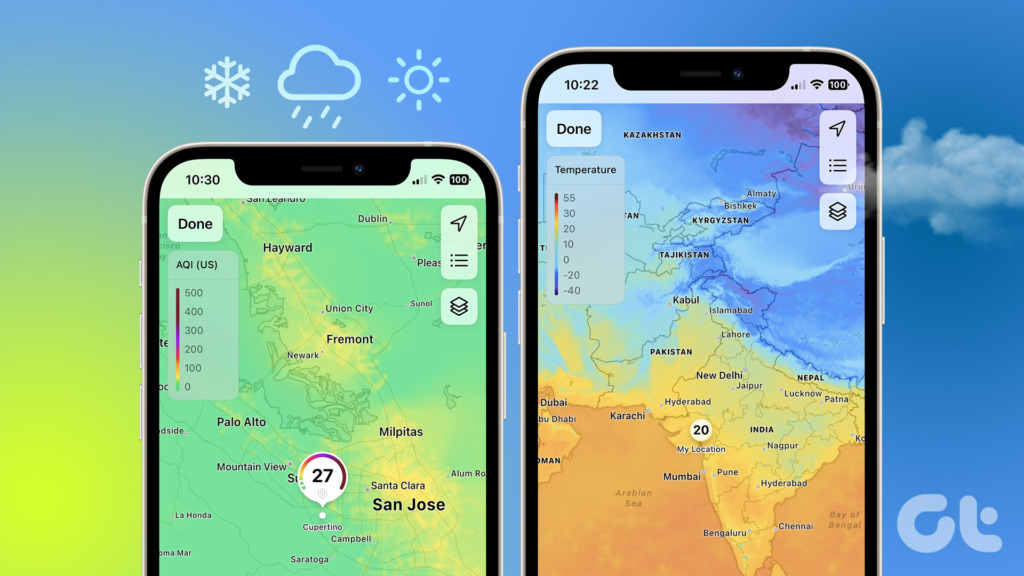
Apple’s default weather app has lagged its competitors for years. However, with features like weather maps, it seems like the app comes into its own. So, without further ado, let’s learn how to get the most out of it.
What are Weather Maps on iPhone
As the name suggests, the feature merges two terms, weather and map. Incorporated into iOS 15, the feature lets you view a bird’s-eye view/map of the area’s temperature, precipitation, or air quality. Let’s see how.
How to View Interactive Weather Maps on iPhone
Step 1: Launch the Weather application.
2nd step: Tap the map icon at the bottom left of the screen.
Step 3: Now you will see the weather map of your current location.
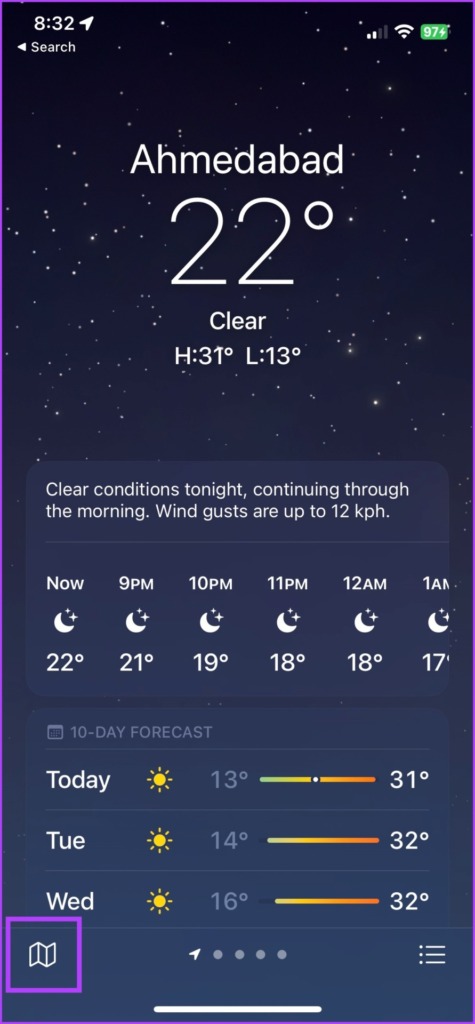

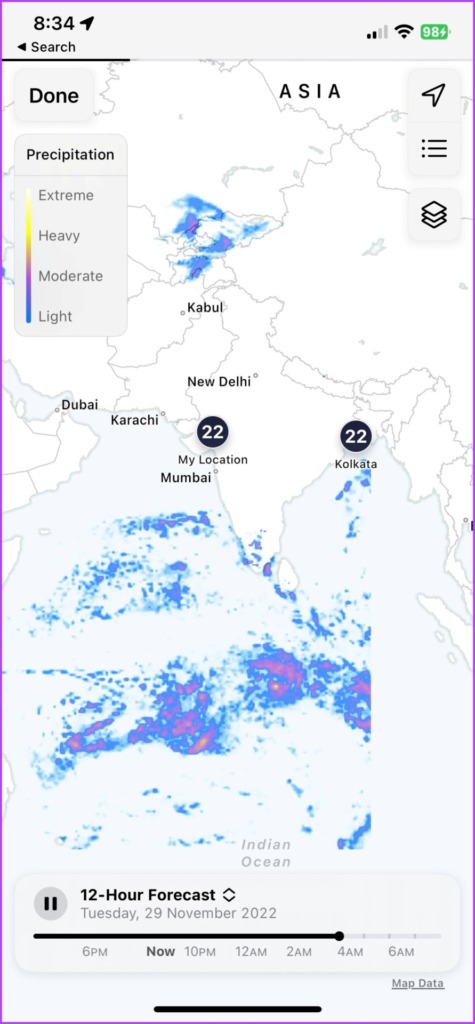

Step 4: You can pinch to zoom as needed. Or swipe the map to change location.
Step 5: Once observed, tap Done to close the weather map.
Another way to access weather maps is to open the Weather app, scroll down until you see a map and tap on it to view weather maps.
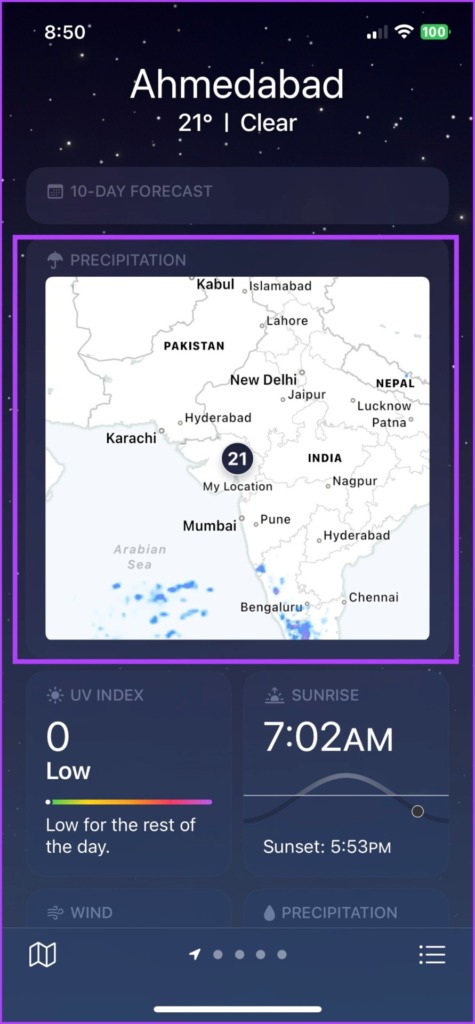

Show full screen weather map of other locations
You can also view weather maps for other places you have added to your favourites, say the city you plan to visit or where your parents or children live.
Let us walk you through how to add a location as a favorite and then check its weather map.
Step 1: In the Weather app, tap the hamburger icon (three dots and line icon) in the lower right corner of the screen.
2nd step: Tap the search field and search for the city name or airport code.


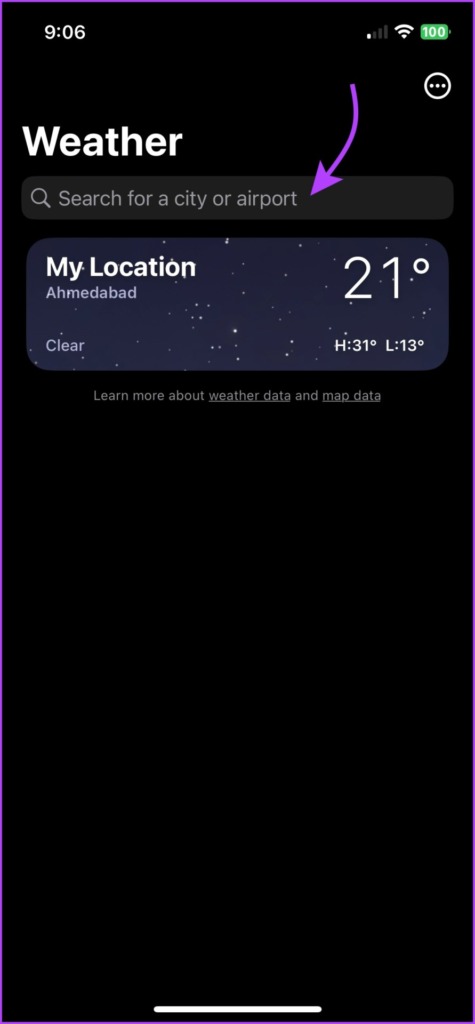

Step 3: Select the location from the search results to view the location’s predictions.
Step 4: Tap Add in the upper right corner to add it to your favorites list.




Step 5: Next, select the location from the list.
Step 6: You can now select the map icon or scroll down and tap on the weather map.




To check the weather map of a different location, you can also go to the weather map section and tap on the hamburger icon (three dots and line icon) in the upper right corner and tap on the location.


To note: To return to the weather map of the current location at any time, tap the angled arrow icon in the upper right corner.
How to check the precipitation forecast, current temperature and air quality
By default, Apple’s Weather app displays the precipitation map. You can change this to show weather maps for current temperature and air quality.
Step 1: When viewing the weather map in full screen, tap the layer icon in the upper right corner.


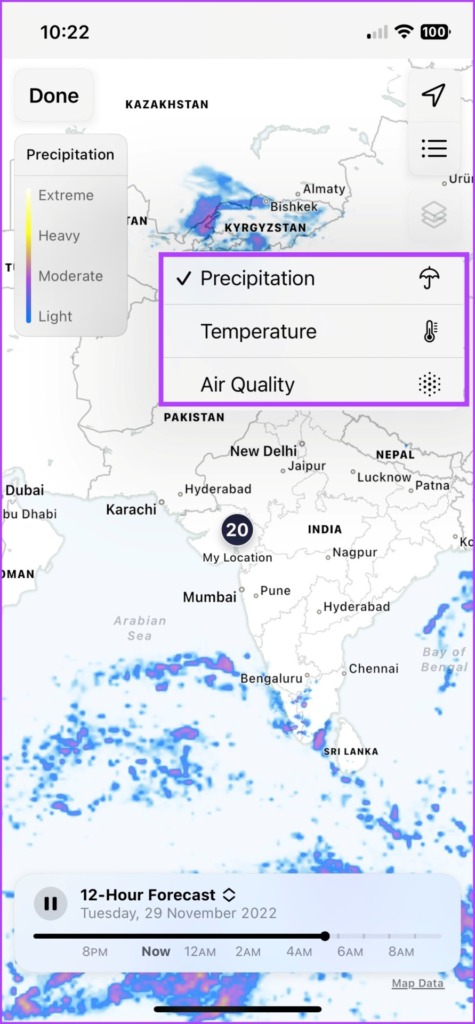

2nd step: Here you can select one of the following options,
- Precipitation: You will see a twelve hour rainfall forecast at the bottom.
- Tap the play icon to view the precipitation movement pattern on the map or manually move the cursor to a specific time.
- Tap the up/down arrow icon next to the play icon and select Next hour forecast or 12 hour forecast (not available in all countries or regions) depending on your preference.




- Temperature: The index measures the temperature from -40 to 55 degrees. You can view the color bar to understand the temperature range. Drag your finger on the map to view the temperature of different locations.
- Air quality: Apple weather maps will display the AQI according to the region. Again, you can match the colors with the index to determine the current state.
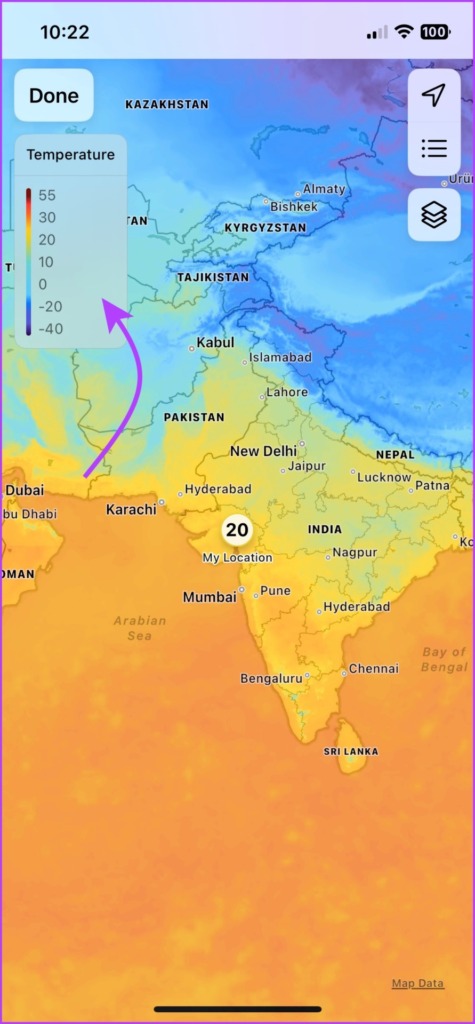



In addition to keeping tabs on changing weather via the map, you can also enable severe weather alerts on the default Weather app. Thanks to this, you will be notified in case of heavy rain, tornado or more.
How to Read iPhone Weather Map
You may have observed the range of colors presented in weather maps. It varies depending on the parameter and its range. Refer to the color bar at the top left of the screen to read/understand the weather conditions.
While the rest is self-explanatory, the temperature color bar can be confusing. Check the list below for some clarification,
- Dark blue: Extremely cold (Less than 32°F or 0°C)
- Light blue: Cold (32 to 59°F or 0 to 15°C)
- Green: Moderate (59 to 68°F or 15 to 20°C)
- Yellow: Slightly warm (68 to 77°F or 20 to 25°C)
- Orange: Warm (77 to 86°F or 25 to 30°C)
- Red: Extremely hot (over 86°F or 30°C)
Another confusion you might run into is understanding the weather icon used and the horizontal bars the app uses for the 10-day forecast. For the former, check out the glossary of weather app icons used by Apple. As for the bars, let us help you.
The horizontal bar provides a view of today’s temperature range. In particular, the length of the bar represents the temperature variations; the longer the bar, the more variations there are. Additionally, the white dot on the bar indicates the current temperature.
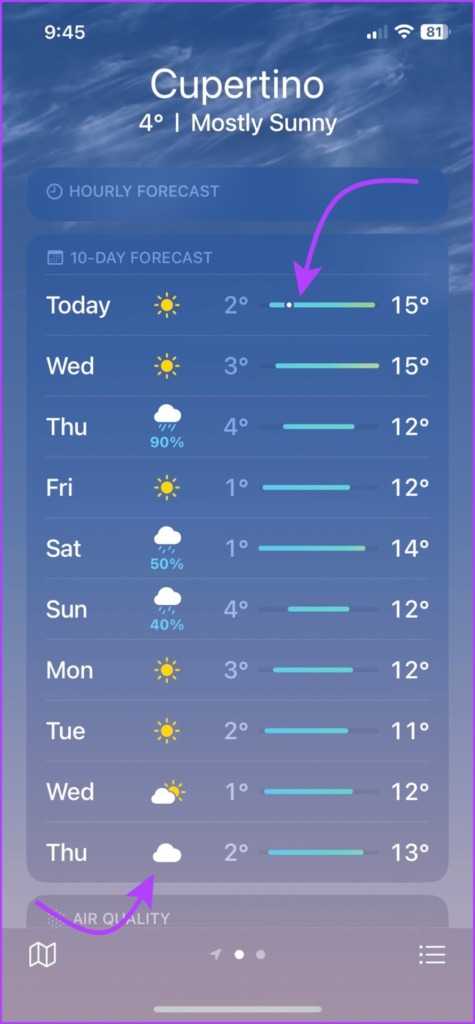

To note: If you think it is showing the wrong temperature, follow this guide to fix iPhone weather showing the wrong temperature.
Using weather maps to measure climate variations
As mentioned in the intro, Apple is finally upping the sock with the Weather app. Additionally, the tech giant finally introduced the Weather app for iPad and Mac with iPadOS 16 and macOS Ventura, respectively.
And we’re all in, right? Let us know your thoughts on Apple’s efforts to improve the Weather app in the comments section below.
